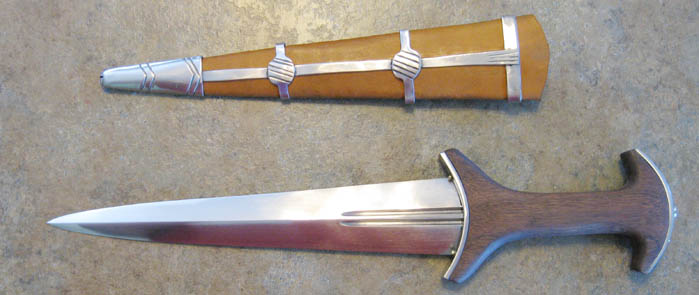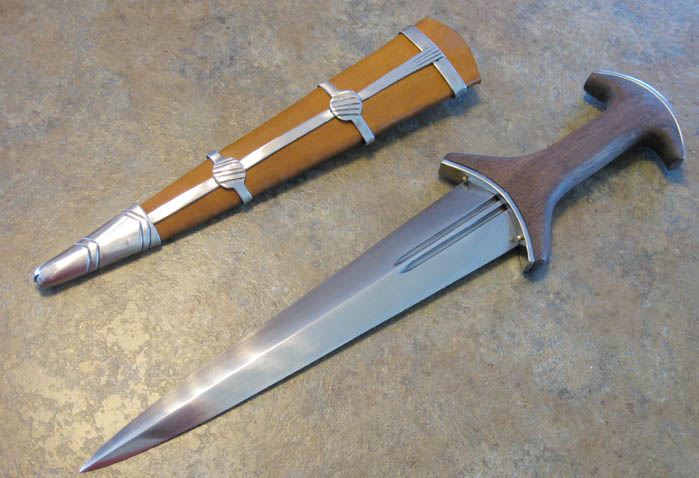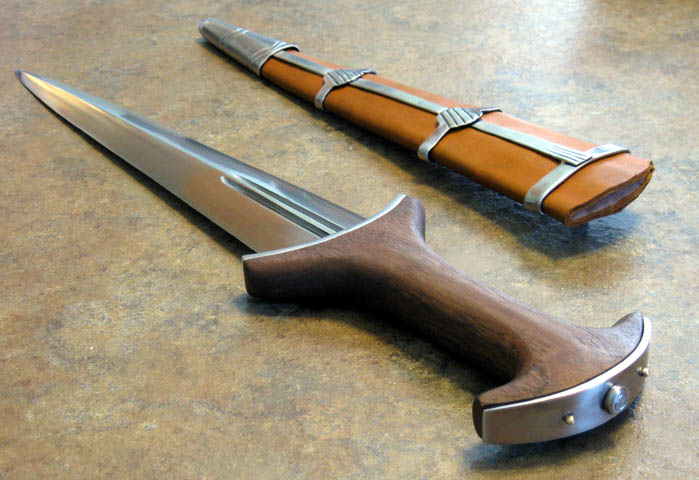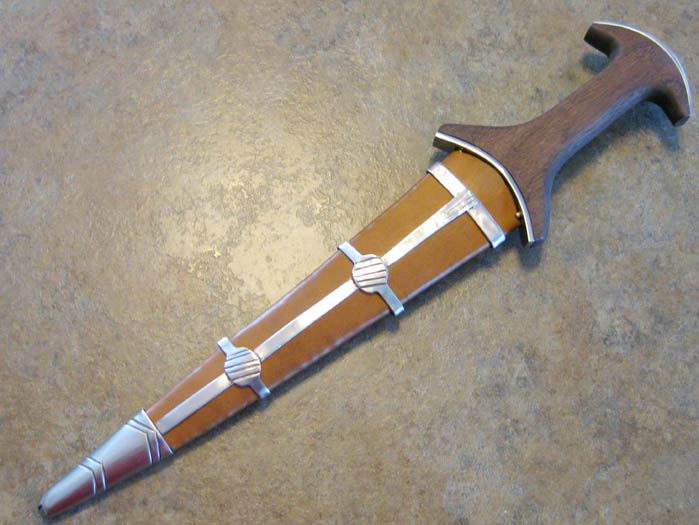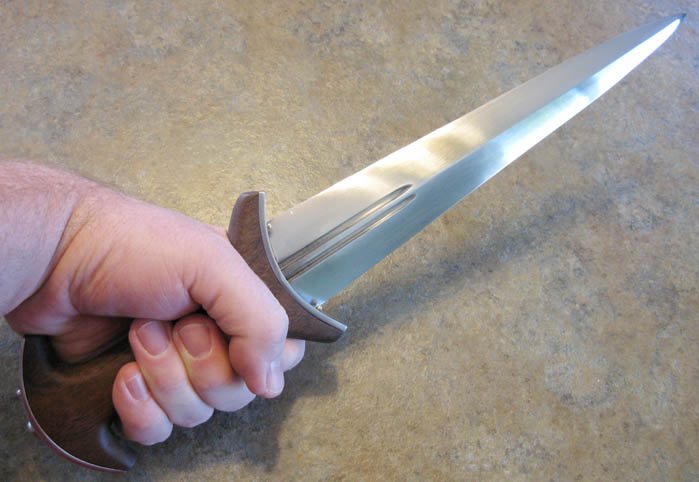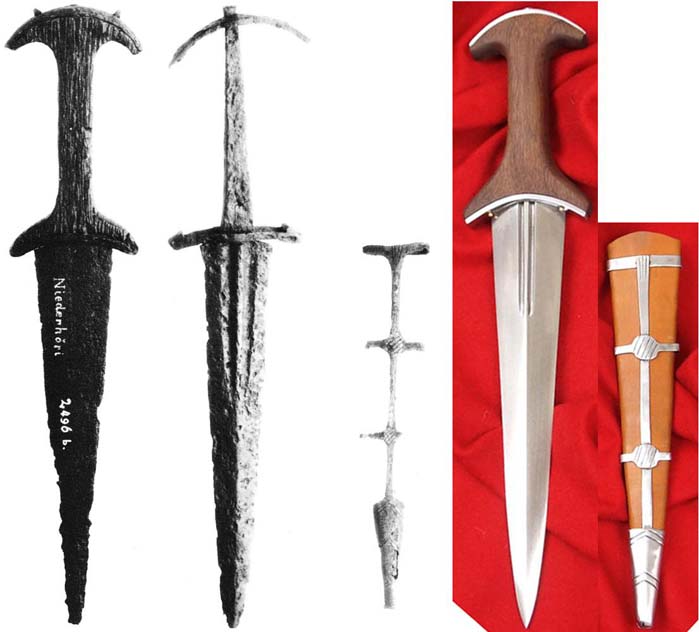I posted some pics in the Show us your baselards thread, but thought I'd share some more pics now that I have it in hand.
Craig and crew made a great dagger based on features found on baselards/Swiss daggers of the late 13th and early 14th centuries, all housed in the Swiss Landesmuseum. Note that most English-language sources just call these baselards or early baselards. Other sources, like German-language sources, often call these Swiss daggers to separate them from fully developed typical baselards.
Many of these are fragmentary: blades survive, but the grips are gone; if the grip survives, there often is no scabbard. So I simply chose features I liked and had them combined into a plausible dagger. The grip is walnut mounted in steel with brass pins. The double-fullered, double-edged blade is triangular in cross-section--the fullered face has a mid-rib, while the back of the blade is flat. This cross-section is found on several blades in that museum. There aren't a ton of repros of these daggers and most have perfectly accurate diamond cross-sections. I chose something different for mine.
The scabbard is two layers of leather with a steel frame. Several steel framed scabbards survive for these daggers and one of them gets reproduced a lot. So I chose a different one for this project. :)
I'm really happy with it. They did a great job.
